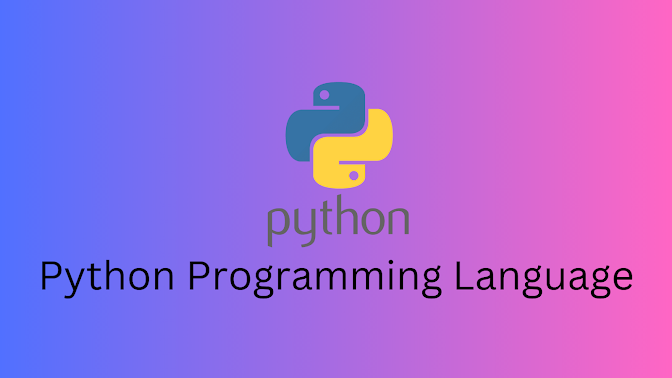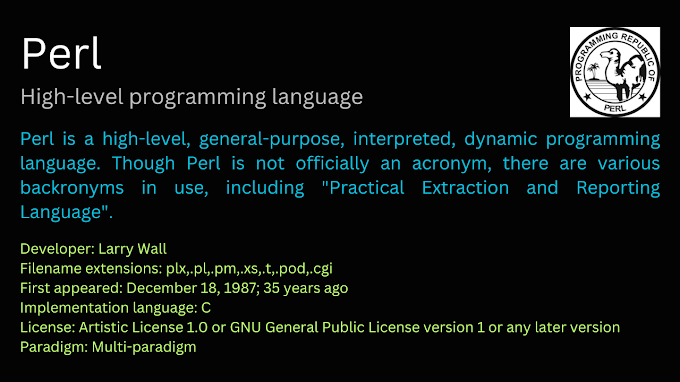Introduction To Python
Python is a versatile and powerful programming language that has gained immense popularity in recent years. In this article, we will explore the various aspects of Python, from its history and key features to its extensive community support.
.png) Brief History And Background
Brief History And BackgroundPython was created by Guido van Rossum and first released in 1991. It was designed to be easy to read and write, with clear and intuitive syntax. The name "Python" was inspired by the British comedy group Monty Python, emphasizing the language's focus on fun and simplicity.
Over the years, Python has evolved and grown in popularity. Its development is overseen by the Python Software Foundation (PSF), a non-profit organization that promotes the language and supports its community.
Features And Advantages
Python boasts several key features that contribute to its widespread adoption. One of its main strengths is its readability, as Python code is highly expressive and resembles English-like syntax. This makes it easier for beginners to learn and understand.
Additionally, Python is known for its versatility. It supports multiple programming paradigms, including procedural, object-oriented, and functional programming, allowing developers to choose the approach that best suits their needs.
Another advantage of Python is its extensive standard library, which provides a wide range of modules and functions for common tasks. This reduces the need for developers to write code from scratch, saving time and effort.
Popularity And Community Support
Python has witnessed a tremendous surge in popularity, becoming one of the most widely used programming languages. Its simplicity, readability, and versatility have attracted developers from various domains, including web development, data science, machine learning, and more.
The Python community is vibrant and supportive, offering a wealth of resources for learning and collaboration. Online forums, such as Stack Overflow, provide platforms for developers to seek help and share knowledge. There are also numerous Python conferences, meetups, and user groups where enthusiasts can network and exchange ideas.
Python Basics
Before diving into advanced topics, it's essential to grasp the fundamentals of Python programming. This section will cover the syntax, data types, control flow, functions, and modules.
Syntax And Structure
Python code is written in a straightforward and readable manner. Indentation plays a crucial role in Python's syntax, as it defines the structure of code blocks. This significant aspect contributes to the clean and organized nature of Python programs.
Data Types And Variables
Python supports various built-in data types, such as integers, floats, strings, lists, tuples, dictionaries, and more. Understanding these data types and how to manipulate them is fundamental to writing effective Python code. Variables are used to store values, and they can be dynamically assigned and reassigned.
Control Flow And Loops
Control flow structures, like if-else statements and loops, allow developers to control the execution flow of their programs. Python offers conditional statements, such as if, elif, and else, as well as looping mechanisms like for and while loops. These constructs enable developers to implement logic and repetition in their code.
Functions And Modules
Functions are reusable blocks of code that perform specific tasks. They help modularize code and make it more manageable. Python also supports modules, which are files containing Python code that can be imported and used in other programs. Modules provide a way to organize related functions, classes, and variables.
Python Data Structures
Python provides a rich set of data structures that cater to different needs. Understanding these structures is essential for efficient data manipulation and analysis.
Lists, Tuples, And Dictionaries
Lists are versatile and mutable sequences of elements, allowing for dynamic resizing and modification. Tuples, on the other hand, are immutable sequences. They are useful for representing fixed collections of related values. Dictionaries are key-value pairs that provide fast lookup based on keys.
Sets And Frozensets
Sets are unordered collections of unique elements, offering operations such as union, intersection, and difference. Frozensets are similar to sets but are immutable, making them suitable for cases where the data should not be modified.
Arrays And Matrices
Arrays are data structures that store homogeneous elements and offer efficient numerical operations. NumPy, a popular Python library, extends arrays to support multidimensional matrices, making it an essential tool for scientific computing and data analysis.
Strings And Regular Expressions
Strings are sequences of characters enclosed in quotes. They are widely used for handling textual data and support various string manipulation methods. Regular expressions provide a powerful way to search, match, and manipulate strings based on specific patterns, enhancing text processing capabilities.
Object-Oriented Programming In Python
Python is an object-oriented programming (OOP) language that promotes the concept of objects and classes. Understanding OOP principles is crucial for building modular and reusable code.
Classes And Objects
Classes are blueprints that define the structure and behavior of objects. They encapsulate data and functions into a single entity. Objects are instances of classes, representing specific occurrences of the class.
Inheritance And Polymorphism
Inheritance enables the creation of new classes based on existing ones, allowing the derived class to inherit the attributes and methods of the base class. Polymorphism allows objects of different classes to be treated as instances of a common superclass, simplifying code maintenance and enhancing flexibility.
Encapsulation And Abstraction
Encapsulation refers to the bundling of data and methods within a class, hiding the internal implementation details from outside access. Abstraction focuses on providing essential features and hiding unnecessary complexity, allowing users to interact with objects using simplified interfaces.
Special Methods And Operator Overloading
Python provides special methods, denoted by double underscores, which allow customization of object behavior. Operator overloading is achieved through these special methods, enabling objects to respond to operators such as +, -, *, and more.
Python Libraries And Modules
Python's extensive collection of libraries and modules empowers developers by providing pre-built solutions to common programming tasks.
Popular Libraries (Numpy, Pandas, Matplotlib, Etc.)
NumPy is a fundamental library for scientific computing with Python, offering powerful numerical operations and multidimensional array manipulation. Pandas provides high-performance data structures and data analysis tools. Matplotlib is a plotting library for creating static, animated, and interactive visualizations.
Working With Data Analysis And Manipulation
Python libraries like Pandas and NumPy offer comprehensive functionality for data manipulation, cleaning, filtering, and aggregation. These libraries make it easier to perform tasks such as data transformation, merging, and statistical analysis.
Scientific Computing And Numerical Operations
NumPy, SciPy, and SymPy are examples of libraries used for scientific computing. NumPy provides arrays and mathematical operations, while SciPy offers advanced numerical algorithms and scientific capabilities. SymPy is a symbolic mathematics library that can perform algebraic operations and solve equations.
Web Development And Gui Frameworks
Python has a wide range of libraries and frameworks for web development, including Django and Flask. Django is a robust web framework that follows the model-view-controller (MVC) architectural pattern. Flask, on the other hand, is a lightweight framework suitable for smaller projects. Python also has libraries like Tkinter and PyQt for GUI development.
Python For Web Development
Python's versatility extends to web development, where it has gained significant traction due to its simplicity and the availability of powerful frameworks.
Introduction To Web Frameworks (Django, Flask, Etc.)
Web frameworks like Django and Flask simplify web application development by providing a structured approach and handling common tasks. Django is a full-featured framework that offers a complete solution for building complex web applications. Flask, on the other hand, is a microframework that focuses on simplicity and flexibility.
Building Web Applications And Apis
Using Python web frameworks, developers can build web applications and create RESTful APIs (Application Programming Interfaces). These APIs allow different software systems to communicate and exchange data seamlessly.
Database Integration And Orm (Object-Relational Mapping)
Python supports a variety of databases, including popular ones like MySQL, PostgreSQL, and SQLite. ORMs, such as Django's ORM and SQLAlchemy, provide a convenient way to interact with databases by abstracting the underlying SQL queries and providing a more Pythonic interface.
Front-End Development With Html, Css, And Javascript
Python's role in web development is not limited to the backend. With libraries like Flask and Django, developers can also generate HTML templates and serve them to the client-side. Python can seamlessly integrate with front-end technologies like HTML, CSS, and JavaScript, enabling full-stack development.
Python For Data Science And Machine Learning
Python has become the go-to language for data scientists and machine learning practitioners due to its extensive ecosystem of libraries and tools.
Exploratory Data Analysis And Visualization
Python libraries such as Pandas, NumPy, and Matplotlib enable data scientists to explore and analyze datasets efficiently. These libraries provide powerful tools for data cleaning, transformation, visualization, and statistical analysis.
Machine Learning Algorithms And Models
Python offers a multitude of libraries for implementing machine learning algorithms, including scikit-learn, TensorFlow, and PyTorch. These libraries provide comprehensive support for tasks like classification, regression, clustering, and more.
Deep Learning And Neural Networks
Deep learning, a subset of machine learning, focuses on training neural networks with multiple layers. Libraries like TensorFlow and PyTorch provide high-level abstractions for building and training complex neural networks, making it easier to develop sophisticated deep learning models.
Natural Language Processing And Text Analysis
Python libraries like NLTK (Natural Language Toolkit) and spaCy offer robust tools for natural language processing (NLP) tasks. These libraries provide functionalities for tokenization, part-of-speech tagging, sentiment analysis, named entity recognition, and other text analysis tasks.
Testing And Debugging In Python
Testing and debugging are crucial aspects of software development. Python provides tools and techniques to ensure code quality and identify and resolve issues.
Unit Testing And Test-Driven Development
Python's built-in unittest module and third-party libraries like pytest simplify unit testing, allowing developers to write test cases to verify the correctness of their code. Test-driven development (TDD) is a development approach that emphasizes writing tests before writing the actual code, ensuring higher code quality and better maintainability.
Debugging Techniques And Tools
Python offers various debugging techniques and tools to help developers identify and fix issues in their code. The pdb module provides a built-in debugger, while IDEs (Integrated Development Environments) like PyCharm and Visual Studio Code offer advanced debugging features.
Error Handling And Exception Handling
Python's exception handling mechanism allows developers to handle and recover from runtime errors gracefully. By using try-except blocks, developers can anticipate potential errors and implement appropriate error handling logic, improving the robustness of their code.
Python Best Practices
To write high-quality and maintainable Python code, it's important to follow best practices and adhere to established conventions.
Code Organization And Style Conventions (Pep 8)
Python follows a style guide called PEP 8, which provides recommendations on code formatting, naming conventions, and organization. Adhering to these conventions enhances code readability and promotes consistency among developers.
Documentation And Comments
Documentation plays a crucial role in code maintainability. Python supports docstrings, which allow developers to provide in-line documentation for functions, classes, and modules. Additionally, adding meaningful comments throughout the code can make it easier for other developers to understand the logic and purpose behind each section.
Version Control And Collaborative Development
Version control systems like Git enable collaborative development by allowing multiple developers to work on a project simultaneously. Python integrates well with version control tools, making it easier to track changes, resolve conflicts, and maintain a clean codebase.
Performance Optimization And Profiling
Python offers several techniques and tools for optimizing code performance. Libraries like NumPy provide optimized numerical operations, while profilers like cProfile help identify performance bottlenecks. Understanding these techniques can significantly improve the efficiency of Python programs.
Conclusion
Python's strengths and versatility have made it a popular choice among developers across various domains. Its readable syntax, extensive libraries, and supportive community contribute to its widespread adoption.
Beneath the surface of Python lies a dynamic language that can handle diverse programming tasks, from web development and data analysis to machine learning and scientific computing. Its adaptability and ease of use make it an excellent choice for both beginners and experienced programmers.
As Python continues to evolve and gain traction in the industry, its future looks promising. With ongoing advancements in libraries, frameworks, and tools, Python is poised to remain a dominant force in the programming landscape.
If you're new to Python or already familiar with it, I encourage you to explore the vast possibilities that Python offers. Whether you're interested in web development, data science, or any other domain, Python provides a solid foundation for your journey. Embrace the Python community, continue learning, and unlock the full potential of this remarkable programming language.



0 Comments
Welcome! Please Comment Without Any Hesitation.
Thank You